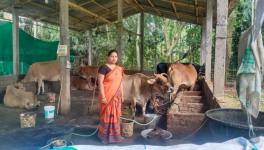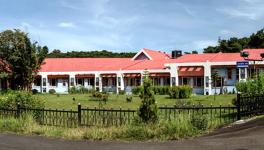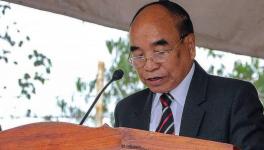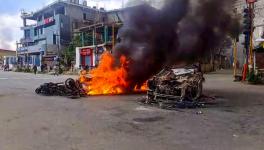Who is Responsible For the Attack on Patricia Mukhim?
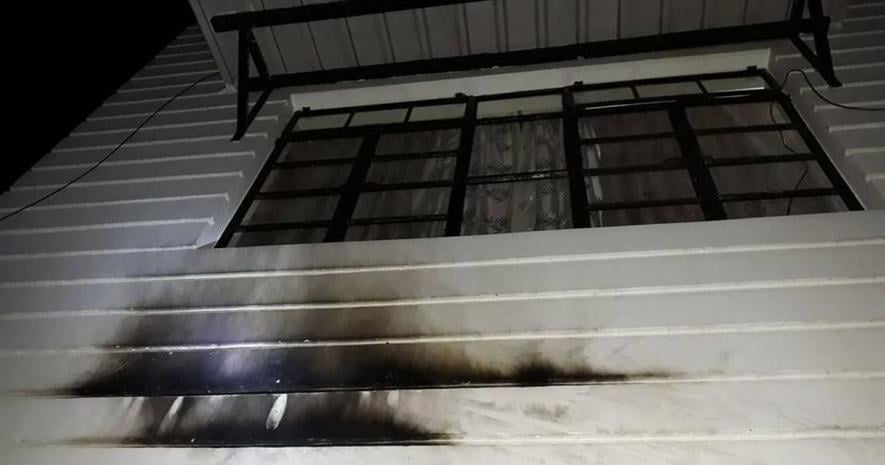
Image Courtesy: Scroll.in
In yet another attack on press freedom in India, on the night of April 17, a petrol bomb was hurled at Patricia Mukhim’s residence. The fire was noticed quickly and put out. However, the identity of the perpetrators is yet to be known.
Patricia Mukhim, the editor of the Shillong Times was awarded the Padmashree in 2000. She has been a vocal critic of the less than savoury aspects of Meghalaya’s politics and development. The attack on her residence has attracted widespread condemnation from journalists across the Northeast. Who could have possibly wanted to send her such a stern message?
Glancing through the recent editorials and articles she authored in the Shillong Times, one could gain some insight. On March 21, an editorial titled ‘Murders Most Foul’, questions were raised regarding the assassination of Jonathone Sangma and the subsequent killing of Sohan Shira in an ‘encounter’. The editorial demanded a thorough investigation into both the deaths, considering that the now-defunct GNLA usually owned up to attacks, which in the case of Jonathone Sangma was not the case. The GNLA was blamed before the facts were fully ascertained and the group never owned up to the attack, a few days later Sohan Shira was killed in an ‘encounter’. The other death that the article dealt with, was of an RTI activist who campaigned against the deals between cement companies and the members of the Jaintia Hills District Council.
On April 6, the editorial questioned the role played by the Khasi Students’ Union (KSU) in the light of their ‘awakening day’. The editorial was titled, ‘Do Khasis Need An Awakening Day?’ the gist of it being that the KSU was prone to attack and vandalise businesses owned by non-tribals in Shillong on the national awakening day. The editorial was quite sharp in its tone, and essentially blamed the KSU for failing to reign in the lumpen elements, which in turn has given Khasis a bad name.
Subsequently, two editorials were published that focused on mining in Meghalaya. On April 13, an editorial titled ‘Why Harp On Mining As The Only Source Of Revenue?’ focused on the degradation unabated limestone mining was causing the state. The limestone mined in Meghalaya goes to feed the cement factories in Bangladesh. The editorial mentioned the nexus between miners, transporters, the BSF, and the MNCs with their factories in Bangladesh. Lafarge, for example, has set up a conveyor belt to transport the limestone to their factory across the international border.
The second article, ‘Misuse Of Sixth Schedule’, published on April 14, criticised the Meghalaya government’s attempt to exempt the state from Indian mining laws using the Sixth Schedule of the Constitution. The editorial highlighted that the protection accorded to ‘tribals’ under the Sixth Schedule is limited to exploitation by ‘non-tribals’ however, this provision does not prevent ‘tribals’ from exploiting each other. In this regard, it was stated that 76 percent of tribals in rural Meghalaya are landless. How could this be possible if the basic feature of the Sixth Schedule is to prevent exploitative land alienation? The editorial also alleged that the coal mafia funded the elections of a few of those who are in the present government.
On April 16, an editorial criticised the suggestion of giving Bangladeshi immigrants work permits. This was due to the existing legal framework concerning immigration and work visas. The editorial once again took a dig at the mining mafia, by suggesting that this proposal was to ensure cheap labour for the mines.
It can be thus surmised that the attack could have come from either those involved in the deaths of Jonathone Sangma and Sohan Shira, the KSU or the mining mafia. It is unlikely that the KSU would have done it, considering that one of their infamous slogans was ‘Khasi by blood, Indian by accident’, Mukhim being a Khasi is unlikely to have been a target for a group espousing a cause of racial superiority. The deaths of Jonathone Sangma and Sohan Shira were most likely the result of a local political rivalry based around Williamnagar. In 2013, an FIR had been lodged by Jonathone Sangma on a similar ground. Therefore, the most likely culprits lie in the mining mafia camp.
Get the latest reports & analysis with people's perspective on Protests, movements & deep analytical videos, discussions of the current affairs in your Telegram app. Subscribe to NewsClick's Telegram channel & get Real-Time updates on stories, as they get published on our website.










